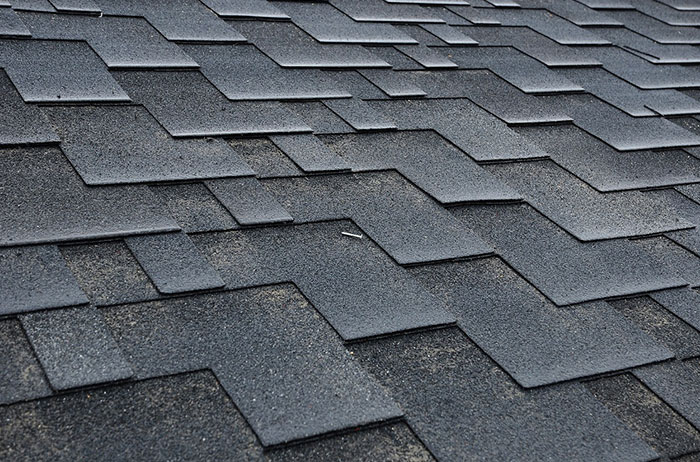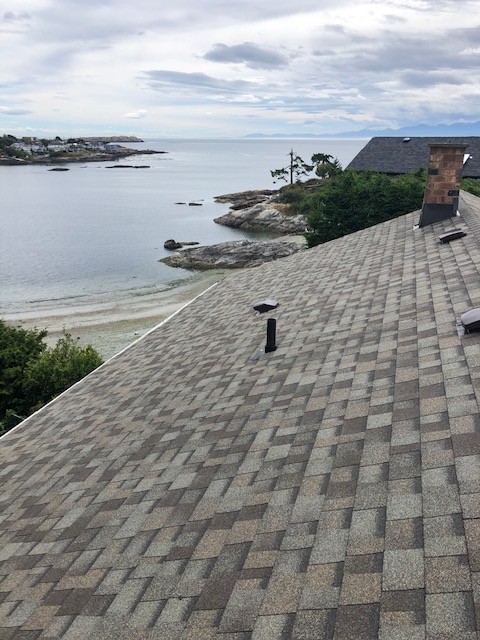Have you ever wondered about the powerful impact the sun can have on your home? It’s not just about brightening your day or making the flowers bloom.
The sun can also significantly affect your roofing structure much more than you may think. In this article, we’ll delve into the fascinating ways in which the sun’s rays can influence the health and longevity of your roof.
We will touch on areas such as weathering, washing, and wearing, as well as energy efficiency. So, let’s go ahead and shed some light on the effects of solar that play out right above our heads.
-
Cracked shingles
The sun’s unrelenting heat can spell trouble for your roof, and one of the most common issues it causes is cracked shingles. When your roof is first adorned with fresh asphalt shingles, they are pliable since they are built to allow for easy installation.
However, as the years go by and the sun’s scorching rays bear down, these shingles lose their supple nature and then become dry and brittle. This transformation into a fragile state can lead to the unfortunate development of cracked shingles.
Cracked shingles expose your roof to potential leaks and other structural problems. These hairline fractures create openings for rainwater to infiltrate your home and cause damage.
In the long run, this sun-induced wear and tear may mean you’ll have to consider a roof replacement sooner than you’d expect. So, when pondering on how the sun can affect your roof, remember that cracked shingles are just one of the ways this celestial force can impact the integrity of your home’s topmost layer.
-
UV rays affect your roof quality over time
The sun’s mighty influence extends beyond just its scorching heat. Its harsh ultraviolet (UV) rays can significantly impact the quality of your roof over time.
During the summer months, UV light shines upon your roof’s surface with its fullest strength, and even on slightly cloudy days, it manages to penetrate through.
These UV rays tend to accelerate the decay of various roofing materials. With excess heat, the crucial protective oils in many roofing materials tend to dry out.
This effect renders your roofing elements brittle and vulnerable.
In the case of asphalt shingles, UV rays penetrate all the way down to their chemical compounds and cause the materials to break down. As this degradation occurs, the oily protective layer on the shingles evaporates and leaves them defenseless.
Over time, they become prone to cracking. This continuous exposure to UV rays can significantly shorten your roof’s lifespan.
While UV damage can occur throughout the year, it becomes more severe during the scorching summer season.
-
Discoloration
Under the scorching sun’s intense rays, your roof’s appearance may begin to lose it color and shine. This not only diminishes the visual appeal but also hampers your roof’s ability to function as intended.
Choosing lighter-colored roofing materials is a common practice, as they help deflect the sun’s powerful UV rays. This way, you can safeguard your roof’s surface from damage.
Moreover, these lighter hues work to maintain a cooler interior for your home during the sweltering summer months.
However, prolonged exposure to both heat and water can also harm the metal components of your roof. Rust may gradually set in and weaken your roofing elements as it diminishes your roof’s overall durability.
So, when you’re thinking about how to limit the sun’s effect on your roof, consider the aesthetic and functional impact of discoloration and the potential vulnerability it may bring to your roof’s structure.
-
Reduced coating longevity
Radiation from the sun can impact more than just the asphalt. It also affects the longevity of coatings and sealants on your roof.
The protective coatings on your roof are very much like paint, so when they’re exposed to prolonged sunlight they can deteriorate and lose their effectiveness.
However, there are specially designed coatings, like reflective coatings, that can withstand the sun’s rays for an extended period. It’s essential to match the type of coatings on your roof materials with the specific weather conditions in your region.
In considering how the sun can affect your roof, it’s vital to understand that reduced coating longevity can lead to diminished protection for your roof. This makes your roof more susceptible to the elements.
So, it is important that you choose the right coatings that can stand up to the sun’s relentless assault.
-
Thermal shock tends to weaken your home’s structural integrity
During hot summer days, temperatures soar, only to plummet after sunset. This rapid fluctuation causes roofing and construction materials to expand and contract swiftly.
This gradually compromises the entire structural framework of your roof.
Metal roofing, in particular, is vulnerable to warping and creating gaps due to thermal shock. The varying expansion and contraction rates of different roofing components make this issue worse.
As these materials expand and contract at different rates, they weaken and then affect the overall integrity and structure of your roof. In severe cases, excessive heat can lead to warping or splitting of the roof itself.
The downspouts and gutters, which are some of the integral parts of your roof, can also fall victim to thermal shock. Over time, the continuous expansion and contraction can cause these fixtures to detach, thereby leaving your roof exposed to potential water damage.
Conclusion
When it comes to safeguarding your roof from the sun, trust the experts at Shoreline Roofing. With our top-notch services, we can fortify your roof against the sun’s wrath and help ensure it stands strong for years to come.
Don’t let your roof suffer under the scorching sun. Reach out to us today to experience the peace of mind that comes with a well-protected roof.



